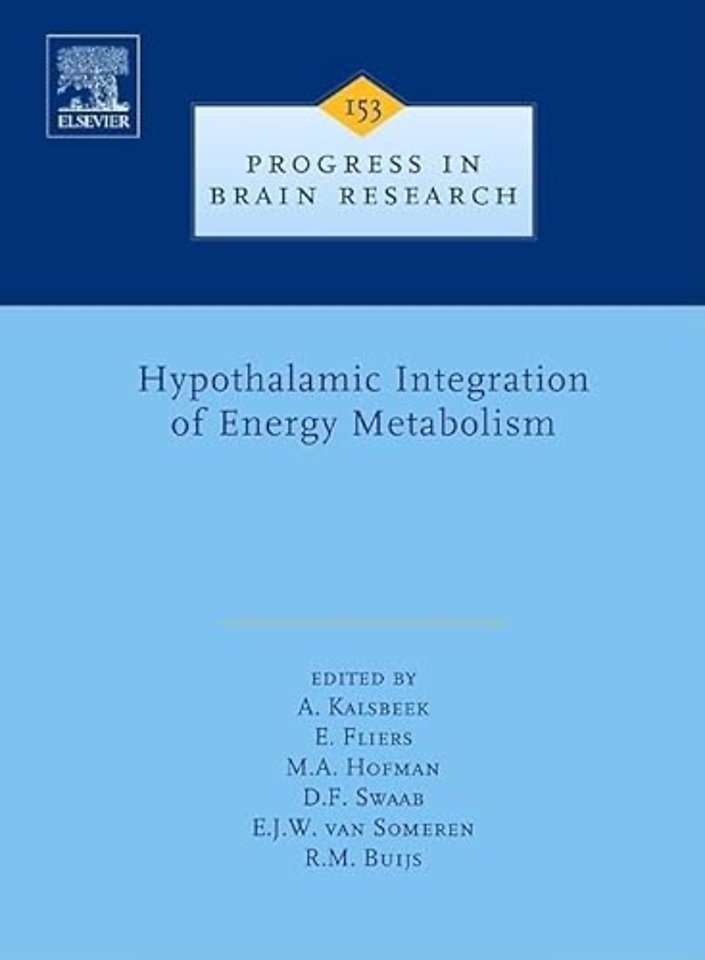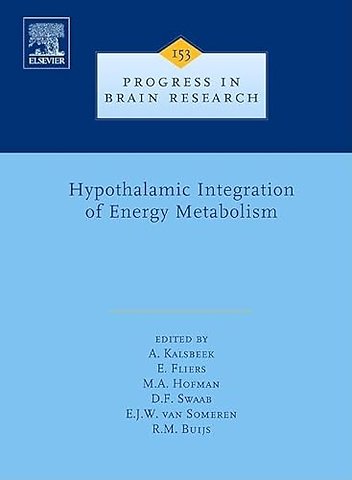List of Contributors.<br>Preface.<br>Acknowledgements.<br><br>I. HYPOTHALAMIC INTEGRATION OF ENERGY METABOLISM<br>1. The human hypothalamus in metabolic and episodic disorders.<br>2. Synaptic plasticity mediating Leptin's effect on metabolism.<br>3. The hypothalamus, hormones and hunger: alterations in human obesity and illness.<br>4. Glucocorticoids, chronic stress, and obesity.<br>5. Design and synthesis of (ant)-antagonists that alter appetite and adiposity.<br>6. Monogenic human obesity syndromes.<br><br>II. HYPOTHAMAMIC INTEGRATION OF BLOOD BORNE SIGNALS<br>7. The selfish brain: competition for energy resources.<br>8. Integration of metabolic stimuli in the hypothalamic arcuate nucleus.<br>9. Adipokines that link obesity and diabetes to the hypothalamus.<br><br>III. HYPOTHALAMIC CONTROL OF BONE AND THYROID METABOLISM<br>10. The circadian modulation of Leptin-controlled bone formation.<br>11. Hypothalamic thyroid hormone feedback in health and disease.<br>12. The TRH Neuron: a hypothalamic integrator of energy metabolism.<br><br>IV. RHYTHMS, SLEEP AND ENERGY METABOLISM<br>13. The seventeenth C.U. Ariens Kappers Lecture. An Introduction.<br>14. Staying awake for dinner: hypothalamic integration of sleep, feeding and circadian rhythms.<br>15. Circadian timing in health and disease.<br>16. Circadian time keeping: the daily ups and downs of genes, cells and organisms.<br>17. The hypothalamic clock and its control of glucose homeostatis.<br>18. Mechanisms and functions of coupling between sleep and temperature rhythms.<br>19. What can we learn from seasonal animals about the regulation of energy balance?<br><br>V. HYPOTHALAMIC INTEGRATION OF "SENSORY" INFORMATION<br>20. Organization of circadian functions: interaction with the body.<br>21. Hypoglycemia in diabetes: pathophysiological mechanisms and diurnal variation.<br>22. Hypothalamic integration of immune function and metabolism.<br><br>Subject Index.

